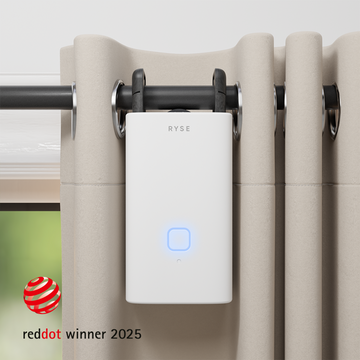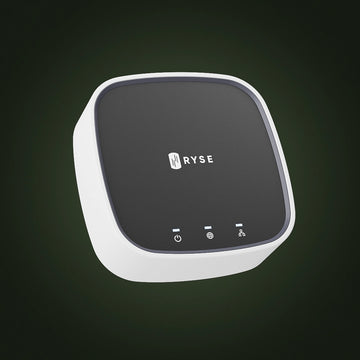Smart homes are no longer a futuristic dream, they’re part of everyday life. From voice-controlled lights to automated thermostats, technology is making living spaces more comfortable, energy-efficient, and convenient. One upgrade that’s gaining popularity is motorized blinds.
But if you already have blinds in your home, you may be wondering: Can existing blinds be motorized? The short answer is yes. In many cases, your current blinds can be upgraded with retrofit motorization kits. This means you don’t always need to buy new blinds to enjoy the benefits of automation.
In this guide, we’ll explain how existing blinds can be motorized, what options are available, the benefits of upgrading, and what you need to consider before making the switch.
Why Motorize Blinds?
Before exploring how to motorize your blinds, let’s look at why people are making the shift.
-
Convenience
No more reaching for cords or struggling with blinds in hard-to-reach places. With motorization, you can control blinds with a remote, smartphone app, or even your voice. -
Energy Efficiency
Automated blinds can open or close depending on the time of day, reducing heating and cooling costs by regulating natural light. -
Safety
Motorized blinds eliminate hanging cords, making them safer for children and pets. -
Accessibility
For seniors or individuals with limited mobility, motorized blinds are much easier to operate. -
Modern Appeal
Motorization adds a sleek, high-tech touch to your living space.
Can Existing Blinds Really Be Motorized?
Yes, many types of existing blinds can be motorized using retrofit kits. These devices attach to your current blinds and automate the raising, lowering, or tilting process.
The feasibility depends on three main factors:
-
Type of blind you own
-
Condition of the blinds
-
Compatibility with motorization kits
Types of Blinds That Can Be Motorized
Not all blinds are equally suitable for motorization. Here’s a breakdown:
-
Roller Blinds
One of the easiest types to motorize. Retrofit kits can be attached to the chain mechanism to control rolling up and down. -
Venetian Blinds
Horizontal slat blinds can often be motorized, especially if they have a tilt wand. Motors can control the tilt or fully lift them, depending on the kit. -
Vertical Blinds
These can be motorized to rotate slats and sometimes slide open or closed. -
Roman Blinds
Some retrofit systems can motorize Roman blinds by automating the cord or chain lift. -
Cellular or Honeycomb Blinds
Many models can be motorized, though they may require specific kits.
Retrofit Motorization Kits
A retrofit kit is a device designed to motorize blinds you already own. Popular solutions include:
-
Battery-Powered Kits: Easy to install, usually attached to the chain or cord mechanism.
-
Plug-In Motors: Require a nearby wall outlet, offering consistent power without recharging.
-
Solar-Powered Options: Some kits include small solar panels that keep batteries charged.
Installation Process
Here’s a simplified overview of how retrofit motorization works:
-
Attach the Motor: The kit is installed over the cord or chain loop of your blinds.
-
Secure Power Source: Insert batteries, connect to a plug, or mount a solar charger.
-
Pair with Remote/App: Sync the motor with a remote control or mobile app.
-
Set Limits: Define open and closed positions so the blinds stop at the right points.
Most retrofit kits are DIY-friendly and can be installed in under 30 minutes per blind.
Smart Home Integration
Many retrofit systems connect seamlessly with smart home platforms like Amazon Alexa, Google Home, Apple HomeKit, or Samsung SmartThings. This means you can control blinds with voice commands or include them in routines:
-
“Alexa, close the living room blinds.”
-
“Hey Google, open the kitchen blinds halfway.”
This integration allows advanced automation, such as:
-
Blinds closing automatically at sunset.
-
Opening in the morning to simulate sunrise.
-
Adjusting based on indoor temperature sensors.
Benefits of Motorizing Existing Blinds
-
Cost Savings
Retrofitting is generally cheaper than replacing blinds entirely with new motorized versions. -
Sustainability
Extends the life of your current blinds instead of discarding them. -
Quick Installation
Most kits are designed for DIY setup, saving you time and installation fees. -
Flexibility
You can motorize only certain blinds (e.g., in the bedroom or living room) instead of your entire house.
Things to Consider Before Motorizing
While retrofitting is possible, keep these points in mind:
-
Blind Condition: If your blinds are old or damaged, it may be better to replace them.
-
Compatibility: Not all blinds work with every retrofit kit. Always check specifications.
-
Power Supply: Consider whether you prefer battery, plug-in, or hardwired systems.
-
Budget: Retrofit kits typically cost $150–$200 per window, while new motorized blinds can cost $300–$800.
-
Aesthetics: Some kits may be bulkier and less sleek compared to built-in motorized blinds.
Cost Breakdown
-
Retrofit Kits: $150–$200 per window.
-
Professional Installation (if needed): $50–$150 per window.
-
Full Motorized Replacement Blinds: $300–$800+ depending on size and brand.
Clearly, retrofitting is more cost-effective for homeowners looking to upgrade gradually.







